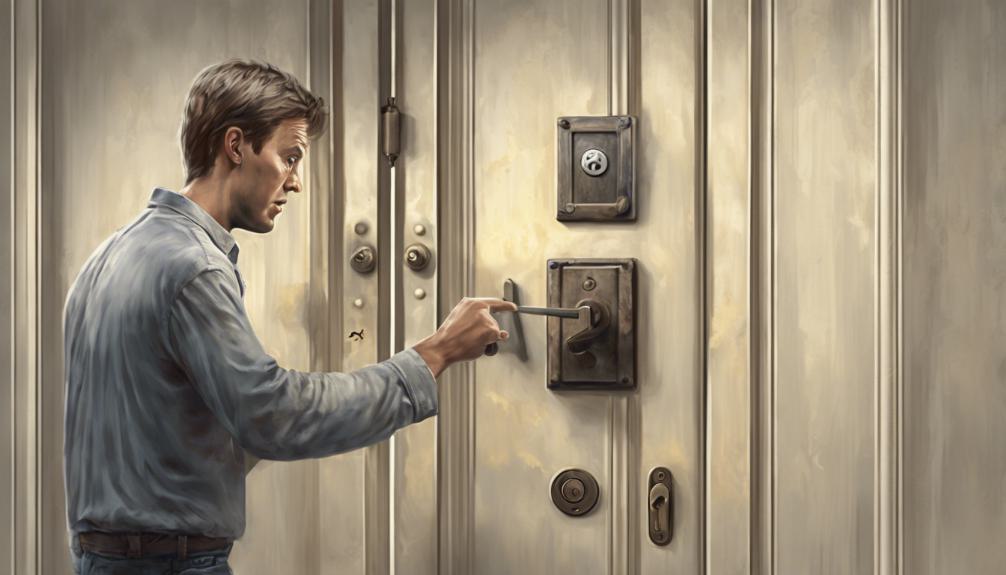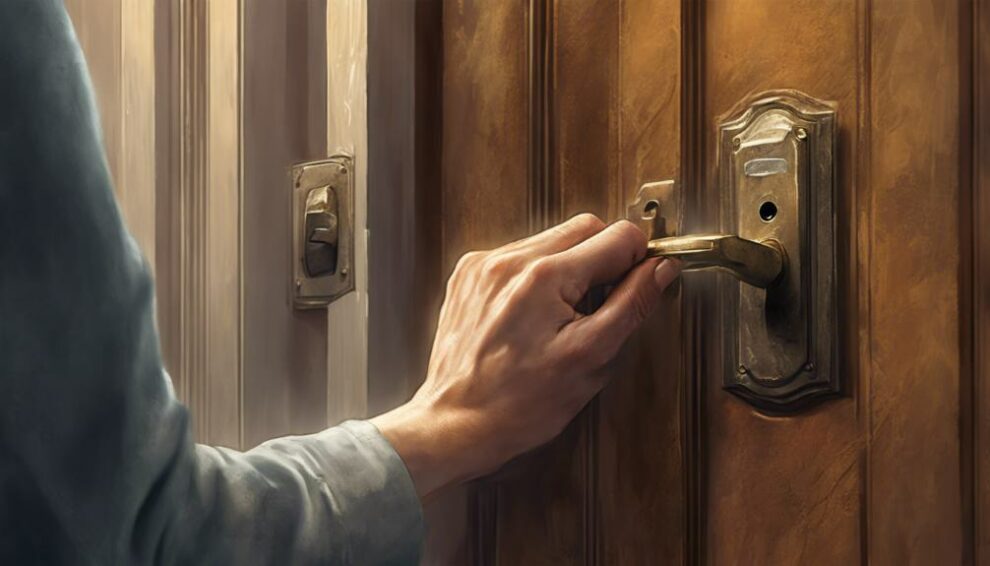If your power locks are slow or unresponsive, doors lock or open unexpectedly, or odd noises occur, a faulty door lock actuator could be the culprit. Quick attention is vital for diagnosis and repair. Signs include inconsistent responses, locking on its own, and unexpected movements. Listen for buzzing, clicking, or grinding noises, inspect loose parts and lubricate. Check for power with a multimeter, test resistance, and examine for circuit issues. Seeking professional help guarantees accurate diagnosis and proper repair. Further exploration reveals detailed steps for effective troubleshooting and resolution.
Key Takeaways
- Slow or no response from power locks, a sign of a faulty actuator.
- Inconsistent locking/unlocking behavior indicates actuator issues.
- Strange noises like rattling or clicking during operation signal potential problems.
- Door ajar warning light triggers may indicate actuator malfunction.
- Testing with a multimeter helps diagnose actuator functionality.
Common Signs of Faulty Door Lock Actuator

If you notice slow or no response from your power locks, it could be a sign of a faulty door lock actuator. Troubleshooting techniques can help you diagnose the issue. Start by checking if the lock moves partially or inconsistently when activated. Inconsistent or delayed responses from the actuator may also indicate a problem with its functionality. If your doors lock but don't open (or vice versa), this could be a clear indicator of a failing door lock actuator. Doors locking or opening without active operation point to a potential fault in the system.
For DIY fixes, you can attempt to replace the door lock actuator yourself. However, if you aren't comfortable with this task, professional repairs are always an option. Replacement options for the actuator vary depending on your vehicle's make and model. Consulting a mechanic for professional repairs can ensure the job is done correctly. Proper diagnosis and repair are essential to restoring your power locks to full functionality.
Recognizing Strange Noises During Operation
Listen closely for any unusual sounds when operating your door lock actuator, as these noises can be early indicators of potential issues. These sounds may manifest as rattling, buzzing, or grinding noises, which could suggest internal mechanical problems. Alternatively, clicking or whirring sounds might signal motor or linkage issues.
To address these noises effectively, consider the following troubleshooting tips:
- Inspect for Loose Components: Check for any loose bolts, screws, or other components that may be causing the strange noises.
- Lubricate Moving Parts: Apply lubricant to the moving parts of the door lock actuator to reduce friction and eliminate any grinding or buzzing sounds.
- Seek Professional Evaluation: If the unusual noises persist after inspection and lubrication, it may be necessary to consult a professional for further diagnosis and repair.
Regular maintenance can help prevent these noises and potential failures. Consider these maintenance recommendations:
- Regularly Clean and Lubricate: Clean the door lock actuator regularly and apply lubricant to ensure smooth operation.
- Perform Periodic Inspections: Check the actuator for any signs of wear or damage, addressing issues promptly to prevent further complications.
- Follow Manufacturer Guidelines: Adhere to the manufacturer's maintenance schedule to prolong the lifespan of your door lock actuator.
Identifying Inconsistent Locking/Unlocking Behavior

When identifying inconsistent locking/unlocking behavior in your door lock actuator, pay attention to any signs of doors locking but not opening or vice versa, as this could indicate a failing actuator. Diagnostic tips include checking for delayed or partial responses to lock/unlock commands, which can signal potential actuator malfunction.
Troubleshooting techniques involve observing any unexpected locking/unlocking of doors without active operation, suggesting a faulty actuator. Moreover, if you notice slow or no response from power locks, it may be a symptom of a bad door lock actuator.
To address this issue, consider examining the wiring connections to ensure they're secure and free from damage. If the problem persists, consulting a professional mechanic for further evaluation and potential replacement of the door lock actuator is advisable.
Understanding Door Ajar Warning Light Triggers
Water ingress into the door lock actuator can trigger the Door Ajar warning light. To help you understand the triggers of this warning light, consider the following:
- Water Ingress Problems, Prevention: Faulty weatherstrips above door locks can allow water to enter the actuator, leading to alarm triggers. Sealing gaps in weatherstrips and lubricating locks can help prevent false alarms.
- Electrical Connection Issues, Diagnostics: Dealership diagnosis can pinpoint the specific faulty actuator causing alarm issues. Electrical connections within the actuator can sometimes malfunction, leading to false door ajar warnings.
- Professional Testing and Troubleshooting: If you suspect electrical issues, seeking professional diagnostics is essential. This can help identify the exact cause of the Door Ajar warning light and provide a targeted solution.
Understanding these triggers and taking preventive measures can help you address the Door Ajar warning light effectively.
Testing and Troubleshooting the Actuator

To test and troubleshoot the actuator effectively, begin by using a multimeter to check for power. Actuator resistance testing can help determine if the component is functioning correctly. Verify power presence by inspecting the actuator and linkage for any signs of damage or wear. If power reaches the actuator but the lock doesn't work, consider circuit problems that may be affecting the actuator's operation. Remember that each door's actuator affects a single lock, so issues may be isolated to a specific location.
In addition to resistance testing, conducting a voltage drop analysis can provide valuable insights into the electrical system's health. This analysis can help pinpoint any areas of concern, such as excessive resistance or voltage losses, that may be impacting the actuator's performance. By following these testing procedures diligently, you can diagnose the root cause of the actuator issues and take appropriate steps to address them effectively.
As an Amazon Associate we earn from qualifying purchases.










